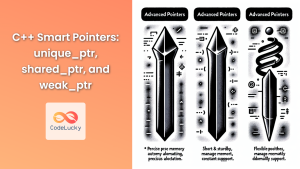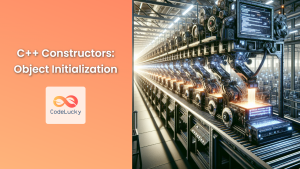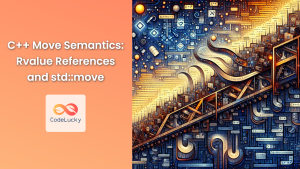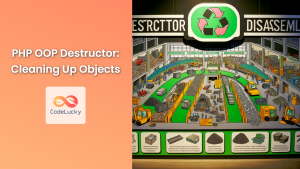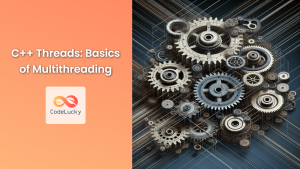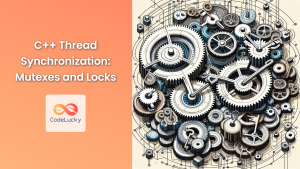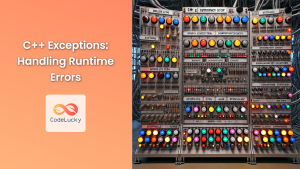Resource Acquisition Is Initialization, commonly known as RAII, is a powerful programming idiom in C++ that ties the life cycle of a resource to the lifetime of an object. This concept is fundamental to writing robust, exception-safe code in C++. In this comprehensive guide, we'll dive deep into RAII, exploring its principles, benefits, and practical applications.
Understanding RAII
RAII is a C++ programming technique that binds the life cycle of a resource (such as memory, file handles, network sockets, etc.) to the lifetime of an object. The core idea is simple yet profound:
- Acquire resources in the constructor of an object.
- Use the resource throughout the object's lifetime.
- Release the resource in the destructor of the object.
🔑 Key Point: RAII ensures that resources are properly managed, even in the face of exceptions or early function returns.
Let's look at a simple example to illustrate this concept:
#include <iostream>
#include <fstream>
#include <stdexcept>
class FileHandler {
private:
std::ofstream file;
public:
FileHandler(const std::string& filename) : file(filename) {
if (!file.is_open()) {
throw std::runtime_error("Failed to open file");
}
std::cout << "File opened successfully\n";
}
~FileHandler() {
if (file.is_open()) {
file.close();
std::cout << "File closed successfully\n";
}
}
void write(const std::string& data) {
file << data;
}
};
int main() {
try {
FileHandler fh("example.txt");
fh.write("Hello, RAII!");
} catch (const std::exception& e) {
std::cerr << "Error: " << e.what() << std::endl;
}
return 0;
}
In this example, the FileHandler class demonstrates RAII:
- The constructor opens the file.
- The
writemethod allows writing to the file. - The destructor ensures the file is closed, regardless of how the object is destroyed.
Benefits of RAII
RAII offers several significant advantages:
- 🛡️ Exception Safety: Resources are properly released even if an exception is thrown.
- 🧹 Automatic Cleanup: No need for explicit cleanup code, reducing the chance of resource leaks.
- 📊 Scope-Based Resource Management: Resources are tied to object lifetimes, making management more intuitive.
- 🔒 Thread Safety: RAII can help in writing thread-safe code by managing locks automatically.
RAII in Action: Memory Management
One of the most common applications of RAII is in memory management. Let's look at an example using a smart pointer:
#include <iostream>
#include <memory>
class Resource {
public:
Resource() { std::cout << "Resource acquired\n"; }
~Resource() { std::cout << "Resource released\n"; }
void use() { std::cout << "Resource used\n"; }
};
void function_using_resource() {
std::unique_ptr<Resource> res = std::make_unique<Resource>();
res->use();
// No need to delete res, it will be automatically deleted when function exits
}
int main() {
std::cout << "Entering main\n";
function_using_resource();
std::cout << "Exiting main\n";
return 0;
}
Output:
Entering main
Resource acquired
Resource used
Resource released
Exiting main
In this example, std::unique_ptr is an RAII wrapper around a raw pointer. It automatically deletes the managed object when the unique_ptr goes out of scope.
RAII for Lock Management
RAII is particularly useful for managing locks in multi-threaded applications. Here's an example using std::lock_guard:
#include <iostream>
#include <mutex>
#include <thread>
class Counter {
private:
int count = 0;
std::mutex mutex;
public:
void increment() {
std::lock_guard<std::mutex> lock(mutex);
++count;
}
int get_count() {
std::lock_guard<std::mutex> lock(mutex);
return count;
}
};
void worker(Counter& counter) {
for (int i = 0; i < 1000; ++i) {
counter.increment();
}
}
int main() {
Counter counter;
std::thread t1(worker, std::ref(counter));
std::thread t2(worker, std::ref(counter));
t1.join();
t2.join();
std::cout << "Final count: " << counter.get_count() << std::endl;
return 0;
}
In this example, std::lock_guard is an RAII wrapper around a mutex. It automatically locks the mutex when constructed and unlocks it when destroyed, ensuring that the lock is always released, even if an exception is thrown.
Custom RAII Classes
While C++ provides many RAII wrappers in the standard library, you might need to create your own for specific resources. Here's an example of a custom RAII class for managing a database connection:
#include <iostream>
#include <stdexcept>
// Simulated database API
class DatabaseConnection {
public:
void connect() { std::cout << "Database connected\n"; }
void disconnect() { std::cout << "Database disconnected\n"; }
void execute(const std::string& query) { std::cout << "Executing query: " << query << "\n"; }
};
// RAII wrapper for DatabaseConnection
class DatabaseHandler {
private:
DatabaseConnection conn;
public:
DatabaseHandler() {
conn.connect();
}
~DatabaseHandler() {
conn.disconnect();
}
void run_query(const std::string& query) {
conn.execute(query);
}
};
void perform_database_operations() {
DatabaseHandler db;
db.run_query("SELECT * FROM users");
db.run_query("UPDATE products SET price = 10 WHERE id = 1");
// DatabaseHandler's destructor will ensure the connection is closed
}
int main() {
try {
perform_database_operations();
} catch (const std::exception& e) {
std::cerr << "Error: " << e.what() << std::endl;
}
return 0;
}
Output:
Database connected
Executing query: SELECT * FROM users
Executing query: UPDATE products SET price = 10 WHERE id = 1
Database disconnected
In this example, DatabaseHandler is a custom RAII class that manages the lifecycle of a database connection. It ensures that the connection is always properly closed, even if an exception is thrown during query execution.
RAII and Move Semantics
RAII works well with C++11's move semantics, allowing for efficient transfer of resource ownership. Here's an example:
#include <iostream>
#include <memory>
#include <vector>
class Resource {
public:
Resource() { std::cout << "Resource acquired\n"; }
~Resource() { std::cout << "Resource released\n"; }
void use() { std::cout << "Resource used\n"; }
};
class ResourceManager {
private:
std::unique_ptr<Resource> resource;
public:
ResourceManager() : resource(std::make_unique<Resource>()) {}
// Move constructor
ResourceManager(ResourceManager&& other) noexcept : resource(std::move(other.resource)) {}
// Move assignment operator
ResourceManager& operator=(ResourceManager&& other) noexcept {
if (this != &other) {
resource = std::move(other.resource);
}
return *this;
}
void use_resource() {
if (resource) {
resource->use();
}
}
};
int main() {
std::vector<ResourceManager> managers;
std::cout << "Creating first manager\n";
managers.emplace_back();
std::cout << "Creating second manager\n";
managers.emplace_back();
std::cout << "Using resources\n";
for (auto& manager : managers) {
manager.use_resource();
}
std::cout << "Vector going out of scope\n";
return 0;
}
Output:
Creating first manager
Resource acquired
Creating second manager
Resource acquired
Using resources
Resource used
Resource used
Vector going out of scope
Resource released
Resource released
In this example, ResourceManager uses RAII to manage a Resource object, and implements move semantics to allow efficient transfer of ownership when stored in a std::vector.
Best Practices for RAII
To effectively use RAII in your C++ code, consider these best practices:
- 🎯 Always use RAII for resource management when possible.
- 🚫 Avoid raw pointers and manual resource management.
- 🔄 Use standard library RAII wrappers like
unique_ptr,shared_ptr,lock_guard, etc. - 📝 When creating custom RAII classes, ensure they're not copyable if it doesn't make sense for the resource.
- 🚀 Implement move semantics for your RAII classes to allow efficient transfer of ownership.
- 🧪 Test your RAII classes thoroughly, including exception scenarios.
Conclusion
RAII is a cornerstone of modern C++ programming, providing a robust and exception-safe way to manage resources. By tying resource lifetimes to object lifetimes, RAII simplifies code, reduces bugs, and makes C++ programs more reliable and easier to reason about.
As you continue your C++ journey, make RAII a fundamental part of your programming toolkit. It's not just a technique, but a mindset that will help you write cleaner, safer, and more efficient C++ code.
Remember, in C++, resource management is not an afterthought—it's an integral part of object design and lifecycle. Embrace RAII, and watch your C++ code become more robust and maintainable!



